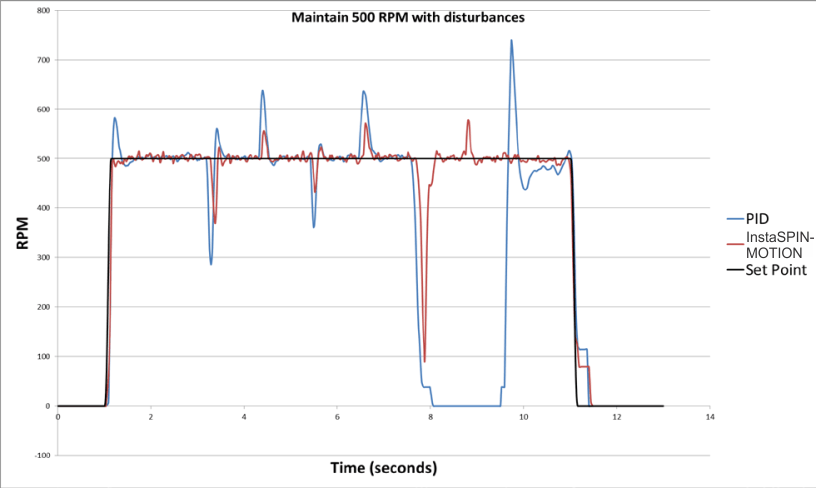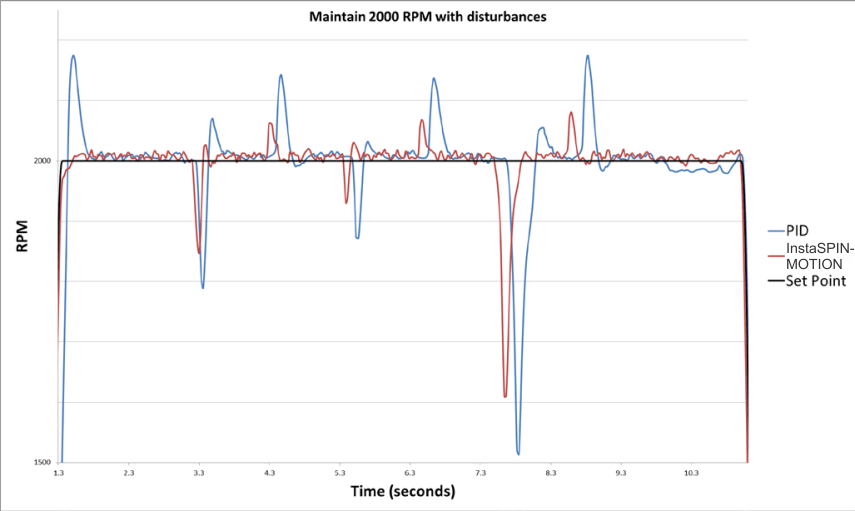SPRUHW1A June 2014 – October 2021 TMS320F28052-Q1 , TMS320F28052M , TMS320F28052M-Q1 , TMS320F28054-Q1 , TMS320F28054M , TMS320F28054M-Q1
- 1Read This First
- 1 F2805xM InstaSPIN-MOTION Enabled MCUs
- 2InstaSPIN-MOTION Key Capabilities and Benefits
- 3InstaSPIN-MOTION Block Diagrams
- 4Application Examples
- 5Evaluating InstaSPIN-MOTION Performance
- 6Microcontroller Resources
Spin Cycles
For the first spin cycle, the objective is to maintain 500 rpm, even when disturbances are introduced. Figure 5-3 shows that InstaSPIN-MOTION recovered from disturbances more quickly, and with less oscillation, than the PI controller. Additionally, InstaSPIN-MOTION does not suffer from the overshoot and undershoot shown by the PI controller when it tries to reach the initial 500 rpm setpoint.
 Figure 4-3 First
Spin Cycle - 500 rpm
Figure 4-3 First
Spin Cycle - 500 rpm
During the second spin cycle, shown in Figure 5-4, the SpinTAC controller consistently recovered from disturbances at 2000 rpm more quickly, and with less oscillation, than the PI controller. Note that SpinTAC does not suffer from the overshoot and undershoot shown by the PI controller when it tries to reach the initial 2000 rpm setpoint.
 Figure 4-4 Second
Spin Cycle - 2000 rpm
Figure 4-4 Second
Spin Cycle - 2000 rpm
Additionally, the PI controller could not recover from the ramp disturbance at the 9.75 second mark. Instead, it shows a steady-state error of roughly 20 rpm.